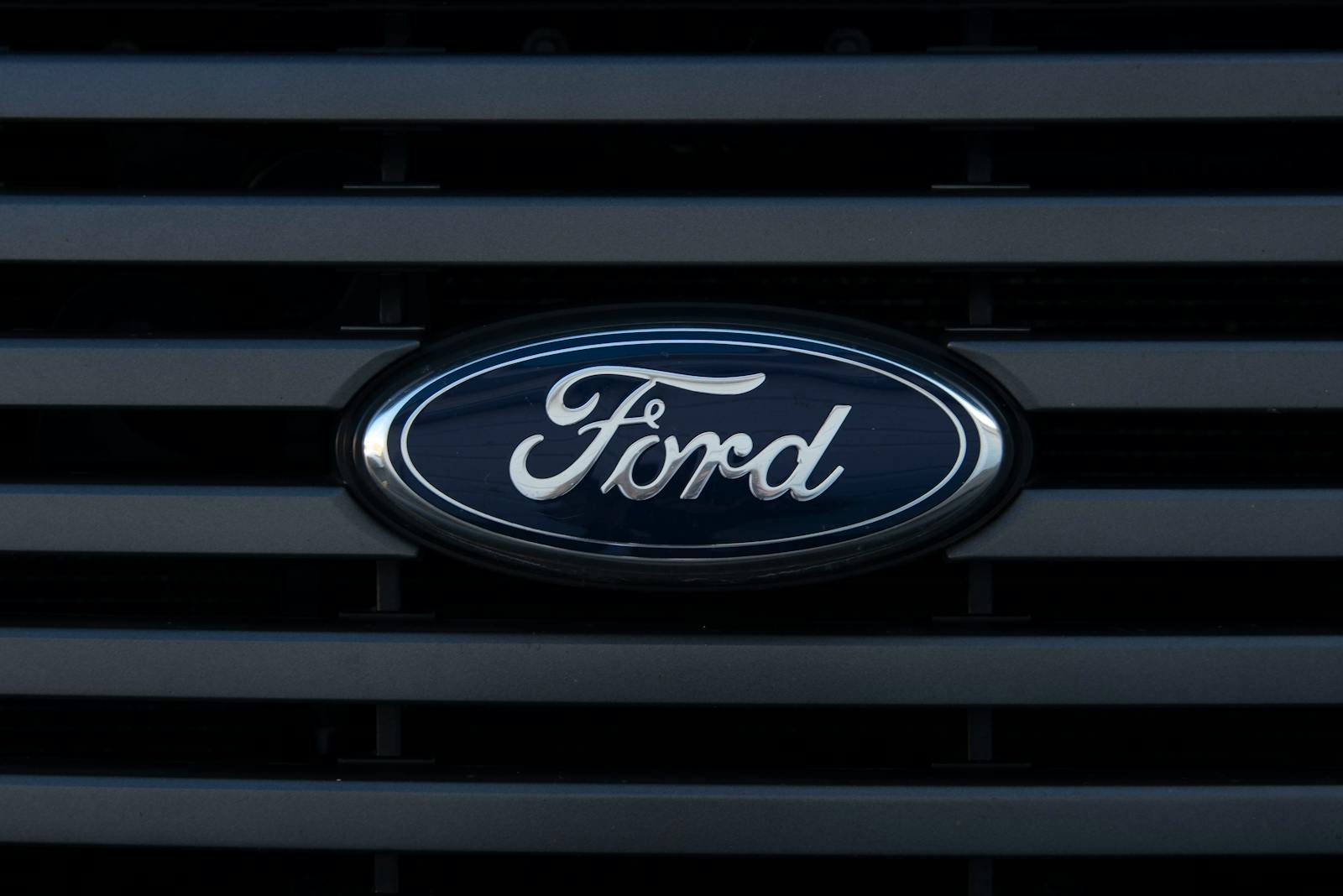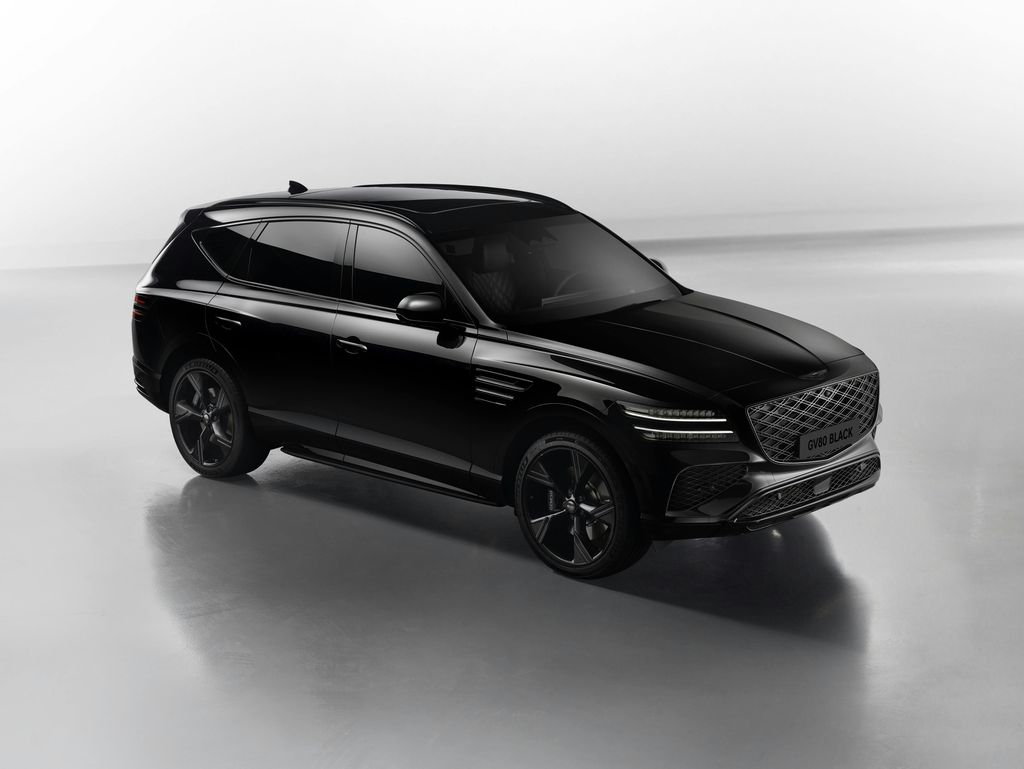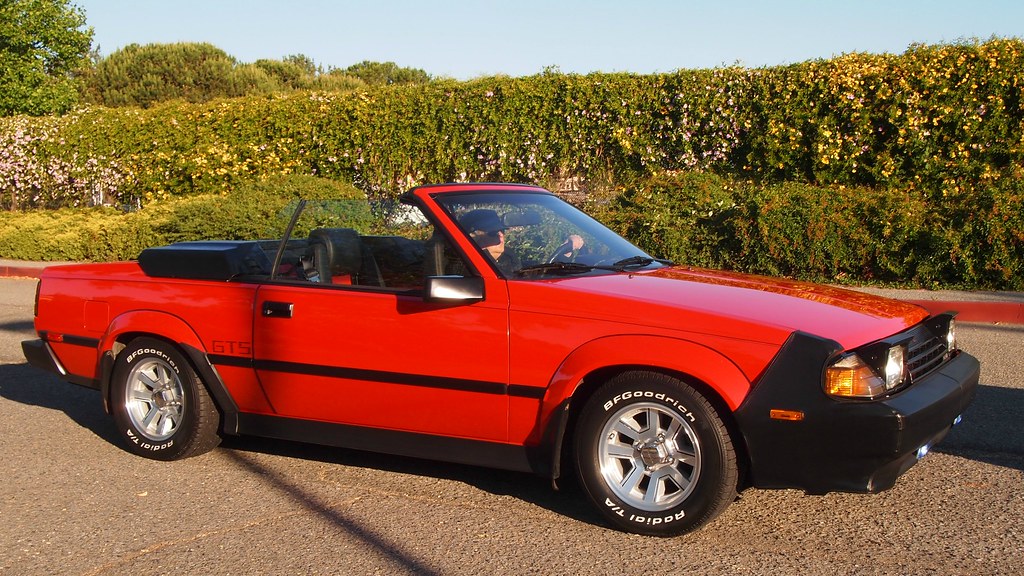
There’s an undeniable magic about a classic convertible. The open road, the wind in your hair, the sun on your face – it’s a timeless fantasy of freedom and exhilaration. Even for those who aren’t hardcore car enthusiasts, the sight of one of these magnificent machines cruising by can stop traffic and evoke a sense of longing for a bygone era of automotive artistry. They are, quite simply, dreams on wheels.
Yet, despite their breathtaking beauty and historical significance, many of these iconic drop-tops rarely find their way into the garages of daily commuters, especially among the younger generation. While the allure of top-down motoring is universal, the practical realities of owning and operating a classic convertible often clash with the demands of modern life. From the sheer cost of acquisition and meticulous maintenance to the absence of contemporary conveniences and safety features, there are compelling reasons why these dream cars remain more admired than driven for daily errands.
This article takes a deep dive into 14 classic convertibles that still turn heads today, celebrating their legendary designs and innovative engineering. But we’ll also candidly explore why, despite their charm, they often get a pass from the daily commuter and the younger crowd looking for practical, reliable, and technologically advanced transportation. Prepare to appreciate these automotive treasures from a fresh perspective, understanding both their enduring appeal and their practical limitations in today’s fast-paced world.
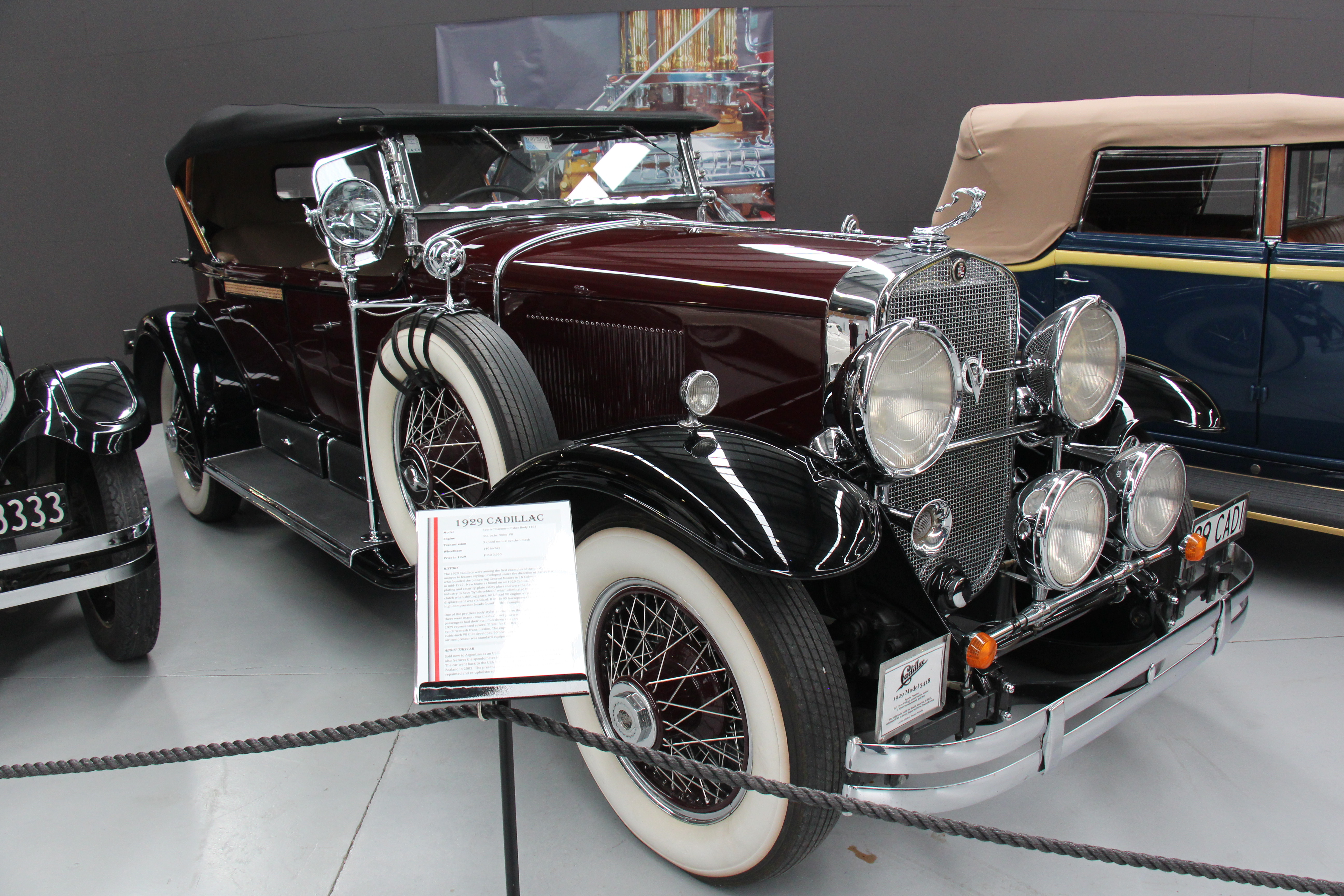
1. **1929 Cadillac 341B Sport Phaeton**For sheer elegance and a commanding presence, the 1929 Cadillac 341B Sport Phaeton stands as a monumental example of early automotive luxury. Cadillacs of this era spared little expense in defining opulence, featuring heavily chromed grilles, four distinct headlights (two conventional and two driving lights that turned with the wheels), and dual chrome horns that announced its arrival with authority. The spare tire, a functional yet stylish detail, was often nestled elegantly in the front fender, adding to its distinguished profile.
The interior was a testament to sumptuous design, boasting full leather upholstery and a stylish dashboard that exuded sophistication. Drivers enjoyed an upright seating position, providing a commanding view of the road – a luxury in itself. For those in the rear, a Dual Cowl version offered a fold-down windshield, an exquisite touch of comfort for back-seat passengers. With its 341CID V8 engine making 95 hp, this 5,100 lb automobile moved with grace, if not blistering speed.
However, for a modern commuter or a younger driver, the 1929 Cadillac 341B Sport Phaeton presents a myriad of impracticalities. Its sheer size and weight, combined with a relatively low horsepower output by today’s standards, make it ponderous in modern traffic and challenging to park. The driving experience is entirely manual, lacking power steering, power brakes, or automatic transmission, demanding significant physical effort and a different driving skill set than contemporary vehicles.
Furthermore, the cost of acquiring one of these beauties today, ranging from $30,000 to $100,000, is a substantial investment that doesn’t include the ongoing expenses of specialized maintenance, rare parts, and suitable storage. Its value and delicate nature mean it’s hardly a car to be exposed to daily wear and tear, let alone the risks of modern road conditions. For those seeking efficiency, reliability, and modern safety features, this classic is a glorious museum piece, not a daily driver.
Car Model Information: 2023 INFINITI QX60 Luxe
Buying a high-performing used car >>>
Brand: Cadillac Model: 341B Sport Phaeton
Price: $33,990 Mileage: 23,460 mi.
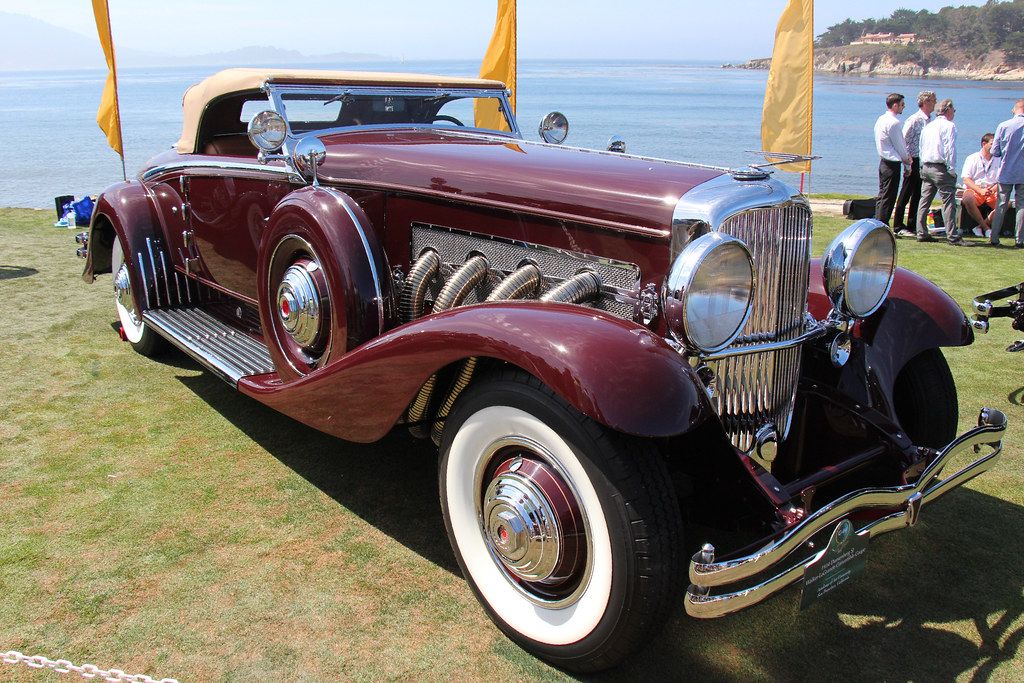
2. **1934 Duesenberg Model J**Duesenbergs hold a legendary status, widely considered among the most luxurious American cars ever constructed. Each Model J was a bespoke masterpiece, hand-built and featuring custom coachwork meticulously selected by the customer. These automotive titans were renowned for their powerful straight-eight engines, capturing the admiration of movie stars, the ultra-wealthy, and even royalty, making them symbols of unparalleled prestige and performance during their production years from 1928 to 1934.
At the heart of every Duesenberg Model J was a hand-built, inline 8-cylinder engine capable of propelling the 5,400 lb car to an astonishing (for its time) 120 mph – a speed virtually unheard of in that era. The coachwork was exquisitely crafted, ensuring that each “Duesey” was a unique, one-of-a-kind creation. No expense was ever spared in the design and construction of these magnificent vehicles, and their grandeur was evident in every curve and detail.
The financial barrier to owning a Duesenberg Model J today is astronomical, making it an immediate non-starter for the vast majority of commuters. While adjusting for inflation would place a modern custom coachwork Duesenberg at over $3 million, the average auction price for an original Model J is a “bargain” at $2.1 million. This staggering price tag signifies that these are not mere cars, but rolling investments and art pieces.
Beyond the initial purchase, the practicalities for a commuter are non-existent. Maintenance requires highly specialized experts and parts that are exceedingly rare and custom-made, leading to prohibitive costs. Driving a Duesenberg involves a demanding, manual experience far removed from modern automatic convenience, and its immense size and delicate nature make it utterly unsuitable for daily urban commuting or even casual drives where parking and traffic are concerns. This car embodies ultimate exclusivity, not everyday practicality.
Car Model Information: 2023 INFINITI QX60 Luxe
Name: Sfn
Caption: 1930 Duesenberg J Murphy Torpedo Convertible
Manufacturer: Duesenberg
Aka: Duesenberg J,Duesenberg SJ (supercharged),Duesenberg SSJ (short-wheelbase supercharged)
Production: 1928–1937,481 produced (445 Model J, 36 Model SJ)
Assembly: Indianapolis,Indiana,United States
Designer: Gordon Buehrig
Class: Luxury vehicle
BodyStyle: Coachbuilt to owner’s preference
Layout: Front-engine, rear-wheel-drive layout#Front mid-engine, rear-wheel-drive layout
Engine: 420 cuin
Abbr: on
Disp: Sfn
Transmission: Manual transmission
Wheelbase: {{convert,142.5,in,mm,1,abbr=on,disp=flip
Predecessor: Duesenberg Model A
Sp: us
Categories: 1930s cars, All articles with unsourced statements, Articles with short description, Articles with unsourced statements from December 2013, Articles with unsourced statements from June 2012
Summary: The Duesenberg Model J is a luxury automobile made by Duesenberg exclusively in 1928 and offered for ten subsequent years. Intended to compete with the most luxurious and powerful cars in the world, it was introduced in 1928, the year before the stock market crash that led to the Great Depression. Duesenberg Motors Company went bankrupt in 1937.
Get more information about: Duesenberg Model J
Buying a high-performing used car >>>
Brand: Duesenberg Model: Model J
Price: $33,990 Mileage: 23,460 mi.
Read more about: Gone Too Soon? 15 Legendary American Brands That Vanished From Our Highways
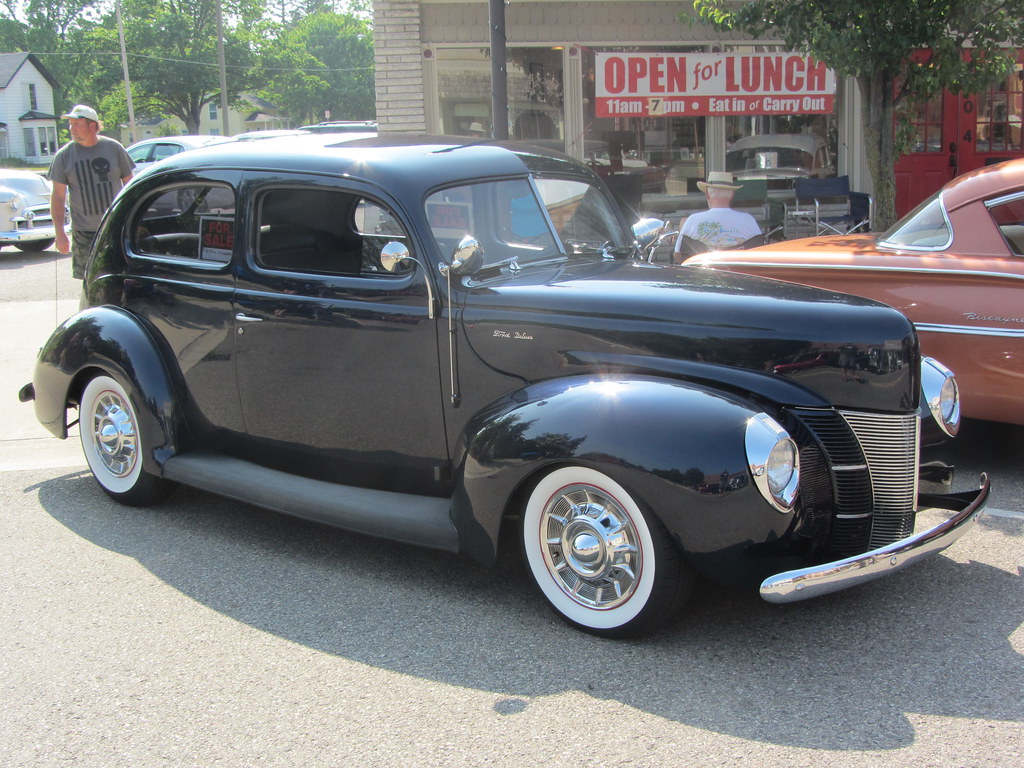
3. **1940 Ford De Luxe**The Ford De Luxe line, introduced in 1938, aimed to bridge the gap between the basic “Standard” Ford and the more upscale Lincoln automobiles, offering a step up in refinement for the average consumer. By 1939, Ford had expanded its offerings to five distinct lines, positioning the De Luxe Ford as a more sophisticated choice above the everyday model. These cars featured a distinctive vertical line grill profile, the recognizable Ford three-piece look, and a split windshield, all contributing to a classic and appealing aesthetic.
Under the hood, the 1940 Ford De Luxe housed a 221 CID Flathead V8 engine, a reliable workhorse for its time. While interiors were considered rather basic compared to luxury makes, the option for leather upholstery was available for those desiring more plushness. Critically, these classics offered plenty of legroom and space, ensuring a comfortable driving and riding experience. The instrument clusters presented a clean, straightforward look with rectangular gauges that were both simple and elegant. A significant convenience for the era was the power-operated convertible top, activated by a switch on the dashboard, offering a taste of luxury and ease.
For today’s commuter or younger driver, the 1940 Ford De Luxe, despite its charm, would pose numerous challenges. Its Flathead V8, while iconic, delivers power output far below modern expectations, making highway merging and acceleration a slow affair. The driving dynamics, with manual steering and brakes, require considerable effort and attentiveness, a stark contrast to the effortless experience of contemporary vehicles. Furthermore, the absence of modern safety features like airbags, anti-lock brakes, and crumple zones makes it a less secure option in today’s traffic.
While you can find nice examples for under $60,000, the ongoing costs of vintage parts, specialized maintenance, and significantly lower fuel economy compared to modern cars would quickly add up. Its classic status also means it’s a car often driven cautiously and sparingly, rather than subjected to the rigors of daily commuting. For a younger generation accustomed to seamless connectivity and performance, this car represents a beautiful piece of history, but not a practical daily driver.
Car Model Information: 2023 INFINITI QX60 Luxe
Name: De Luxe Ford
Manufacturer: Ford Motor Company
Production: 1937–1940
Successor: None (from 1941 the Ford Deluxe reverted to trim-level status)
Class: Luxury car
Related: 1937 Ford
BodyStyle: coupe,convertible (car),Pickup truck,Sedan (automobile),van,ambulance,Phaeton body,Sedan (automobile),station wagon
Engine: Ford Flathead engine,V8 engine
Length: 179.5 in
Abbr: on
Categories: All articles lacking reliable references, Articles lacking reliable references from August 2022, Articles with short description, Convertibles, Coupés
Summary: Ford Motor Company introduced its De Luxe Ford line in 1938 as an upscale alternative to bridge the gap between its base model (usually called Standard) and luxury Lincoln offerings. The “Deluxe” name was first used starting in 1930 to specify an upscale trim starting with the Model 40-B and Model 45-B, then later the De Luxe Ford line was differentiated as a separate “marque within a marque” with separate styling and pricing through 1940. During 1939, Ford had five lines of cars: Ford, De Luxe Ford, Mercury, Lincoln-Zephyr, and Lincoln. After the war, this was simplified to Ford, Mercury, and Lincoln. The 1941 Ford line included “De Luxe” and “Super De Luxe” trim, but these vehicles were not marketed as a separate line. As Mercury Eight sales progressed, the De Luxe approach was cancelled.
This marketing approach was in response to the different General Motors brands, (Cadillac, Buick, Oldsmobile, Pontiac, and Chevrolet), and the Chrysler brands, (Chrysler, DeSoto, Dodge, and Plymouth).
The De Luxe Fords of 1938 featured a more sloping hood and ornamental heart-shaped grille. This look was passed on to the standard line for 1939, as the De Luxe Fords gained sharp v-shaped grilles with vertical bars. The standard line once again inherited the De Luxe look for 1940, this time with body-colored vertical bars. The 1940 De Luxe Ford featured a three-part grille with horizontal bars.
Get more information about: De Luxe Ford
Buying a high-performing used car >>>
Brand: Ford Model: De Luxe
Price: $33,990 Mileage: 23,460 mi.
Read more about: Gone Too Soon? 15 Legendary American Brands That Vanished From Our Highways
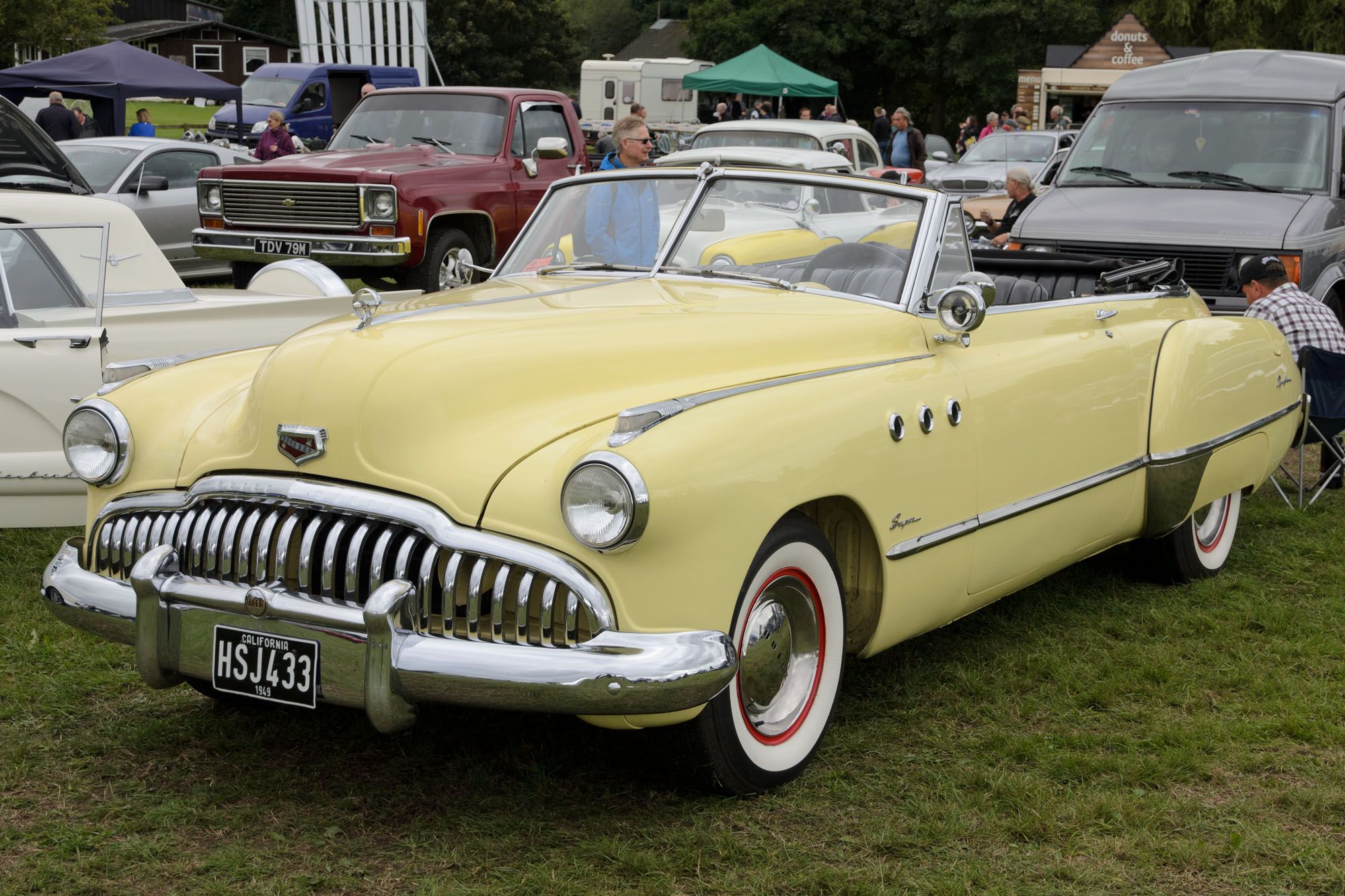
4. **1949 Buick Roadmaster**The 1949 Buick Roadmaster represented a pivotal moment for Buick, being their first major post-war design. It emerged with a fresh, flowing aesthetic characterized by curvy, low lines that exuded a modern elegance. This model year also marked the debut of the distinctive “Ventiports” in the hood, functional at the time for cooling the engine compartment, which quickly became an enduring Buick trademark. This innovation, both practical and stylish, set the Roadmaster apart and signaled a new direction for the brand.
Underneath its sleek exterior, the ’49 Roadmaster was equipped with Buick’s Dynaflow two-speed automatic transmission as standard, a significant advancement for effortless driving. Power came from a Fireball straight-eight engine, nudged up to 150 hp, providing a smooth and elegant ride. The interior continued Buick’s reputation for luxury, featuring sofa-like plush bench seating that offered immense comfort. Pod-style instruments and an abundance of chrome added to the sophisticated cabin ambiance, creating a truly opulent environment. The convertible top was powered, cycling fairly quickly for its time, enhancing the open-air experience with ease.
Despite its luxurious ride and elegant features, the 1949 Buick Roadmaster presents clear disadvantages for a modern commuter. The Dynaflow transmission, while smooth, is notoriously slow and inefficient by today’s standards, offering only two speeds. This makes it sluggish in contemporary traffic and less fuel-efficient than current vehicles. The 150 hp straight-eight, while sufficient for its era, would struggle to keep pace with modern highway speeds and acceleration demands, particularly for a car of its size.
The expansive dimensions of the Roadmaster also make it cumbersome for navigating tight city streets and finding parking spaces. Moreover, like most vehicles of its vintage, it lacks crucial modern safety features, which are non-negotiable for many commuters and younger buyers. With prices ranging from $40,000 to $65,000, it’s a substantial investment for a vehicle that demands specialized care, consumes more fuel, and offers a dramatically different (and slower) driving experience than what is expected from a daily driver today.
Car Model Information: 1993 Buick Roadmaster Estate
Name: Buick Roadmaster
Predecessor: Buick Master Six
Manufacturer: Buick
Production: 1935–1942,1946–1958,1990–1996
ModelYears: 1936–1942,1946–1958,1991–1996
Class: Full-size car
Layout: FR layout
Categories: 1950s cars, 1980s cars, 1990s cars, All articles with unsourced statements, Articles with short description
Summary: The Buick Roadmaster is an automobile built by Buick from 1936 until 1942, from 1946 until 1958, and then again from 1991 until 1996. Roadmasters produced between 1936 and 1958 were built on Buick’s longest non-limousine wheelbase and shared their basic structure with the entry-level Cadillac Series 65, the Buick Limited, and after 1940, the Oldsmobile 98. Between 1946 and 1957, the Roadmaster served as Buick’s flagship.
After being resurrected in 1991, the Roadmaster became the marque’s largest vehicle, measuring 10 in (254 mm) longer with a 5 in (127 mm) greater wheelbase than the C-body Buick Park Avenue. This generation was the first in Roadmaster history to be built on the General Motors B-body platform rather than the C-body, which had traditionally been reserved for GM’s largest and most opulent models that were not Cadillacs.
A Buick Roadmaster Estate station wagon was introduced in 1947 and was manufactured in several generations through 1996. The final run of 1991-1996 Roadmasters shared powertrains and platforms with the Chevrolet Caprice, Cadillac Fleetwood, and Oldsmobile Custom Cruiser.
Get more information about: Buick Roadmaster
Buying a high-performing used car >>>
Brand: Buick Model: Roadmaster
Price: $12,991 Mileage: 96,949 mi.
Read more about: Dream Drives: 15 Classic Cars That Should Absolutely Be Revived for Today’s Roads

5. **1953 Buick Skylark Convertible**To mark its 50th Anniversary, Buick aimed to create something truly extraordinary, and the 1953 Buick Skylark Convertible was the spectacular result. While based on the Roadmaster chassis, the Skylark boasted a distinctive look all its own, setting it apart with unique styling cues. A key design element was the trademark chrome Sweepspear, elegantly following the body lines and culminating at the rear wheel cutout, giving the car a sophisticated and custom appearance.
Powering the Skylark Convertible was Buick’s new Fireball V8 engine, paired with a more advanced three-speed automatic transmission, offering a notable upgrade in performance and driveability. The interior was executed with impeccable taste, featuring ample chrome accents and a large, centrally positioned speedometer that was both functional and aesthetically pleasing. A touch of forward-thinking convenience allowed the driver to retract the hydraulic-operated rag top by simply pulling a knob located below the dashboard on the driver’s side, epitomizing luxury and ease of use for the era.
The rarity of the 1953 Buick Skylark Convertible, with only 1,640 units sold in 1953, is a significant factor in why it’s not a commuter car. This exclusivity translates directly into higher acquisition costs, typically ranging from $50,000 to $100,000 for a good example today. Such a valuable and rare vehicle is often considered an investment or a show car, not a daily runner that risks the wear and tear of routine driving.
For the modern commuter, the Skylark presents challenges related to parts availability and specialized maintenance due to its limited production. Its hydraulic rag top, while advanced for its time, could be a source of complex and costly repairs if issues arise. Furthermore, while the Fireball V8 and three-speed automatic were improvements, they still fall short of the efficiency, performance, and safety standards of contemporary daily drivers. This automotive gem is admired for its historical significance and rarity, but not for its practical suitability for the daily commute.
Car Model Information: 1972 Buick Skylark Custom
Name: Buick Skylark
Caption: 1972 Buick Skylark
Manufacturer: Buick
ModelYears: 1953–1954,1961–1972,1975–1998
Layout: FR layout,Front-engine, front-wheel-drive layout
Successor: Buick Century
Categories: 1980s cars, 1990s cars, All articles with unsourced statements, Articles with short description, Articles with unsourced statements from June 2018
Summary: The Buick Skylark is a passenger car formerly produced by Buick. The model was made in six production runs, during 46 years, over which the car’s design varied dramatically due to changing technology, tastes, and new standards implemented over the years. It was named for the species of bird called skylark.
The Skylark name first appeared on a limited production luxury convertible using the Buick Roadmaster’s chassis for two years, then was reintroduced in 1961 as a higher luxury content alternative to the entry-level Buick Special on which the Skylark was based upon. It was then positioned as Buick’s luxury performance model when the Buick GSX was offered. As GM began downsizing during the late 1970s, the Skylark became the entry-level model when the Special nameplate was used as a trim package designation, then in the 1980s was offered as a front-wheel-drive vehicle where it was both a coupe and sedan for three different generations.
Get more information about: Buick Skylark
Buying a high-performing used car >>>
Brand: Buick Model: Skylark
Price: $29,000 Mileage: 97,176 mi.
Read more about: Dream Drives: 15 Classic Cars That Should Absolutely Be Revived for Today’s Roads

6. **1955 Packard Caribbean**Packard had long cultivated a reputation for producing luxury automobiles, but the post-World War II era brought about declining sales and challenges for the company. In response, the Packard Caribbean was conceived as a halo car to boost sales and was produced from 1953 to 1956. The 1955 model year introduced a host of fresh, eye-catching touches, including distinctive cathedral taillights, a stylish wraparound windshield, twin radio antennas, and running lights positioned on the edge of the rear fenders, all contributing to its striking presence.
A standout feature of the 1955 Caribbean was its vivid tri-tone paint schemes, which were incredibly eye-catching and cemented its status as a statement piece. It came equipped with a comprehensive suite of power amenities, including power steering, power brakes, power windows, power leather seats, and a power-operated soft top – a level of convenience and luxury that was truly exceptional for its time. Another innovative feature was the Selector Radio with a signal seeker function, highlighting its advanced technological offerings.
Under the hood, the 1955 Caribbean housed Packard’s first V8 engine, a 275-hp unit that delivered ample power and a refined ride, providing the company with a high-performance angle to market. It was celebrated as a great car to drive, turning heads with its timeless good looks, a trait that continues to this day. Indeed, its aesthetic appeal remains strong, and owning one today for between $50,000 and $100,000 is, as some argue, a good bargain for such a visually stunning classic.
However, despite its beauty and historical significance, the Packard Caribbean’s place as a practical commuter car is severely limited. Packard’s eventual decline means that finding specialized parts and mechanics can be a considerable challenge and expense. While its 275-hp V8 was robust, it would be significantly less fuel-efficient than modern engines, a crucial consideration for daily driving. The extensive power amenities, while luxurious, add complexity and potential points of failure that require expert, and often costly, restoration and maintenance.
Furthermore, its large size and lack of modern safety features render it less suitable for navigating contemporary traffic conditions. For a younger demographic seeking reliability, low running costs, and modern connectivity, the Caribbean, though undeniably gorgeous, represents a commitment to a different era of automotive ownership that prioritates style and history over everyday utility.
Read more about: Old School Cool: 10 Cars From the Fabulous ’50s That Still Stop Traffic and Steal Hearts
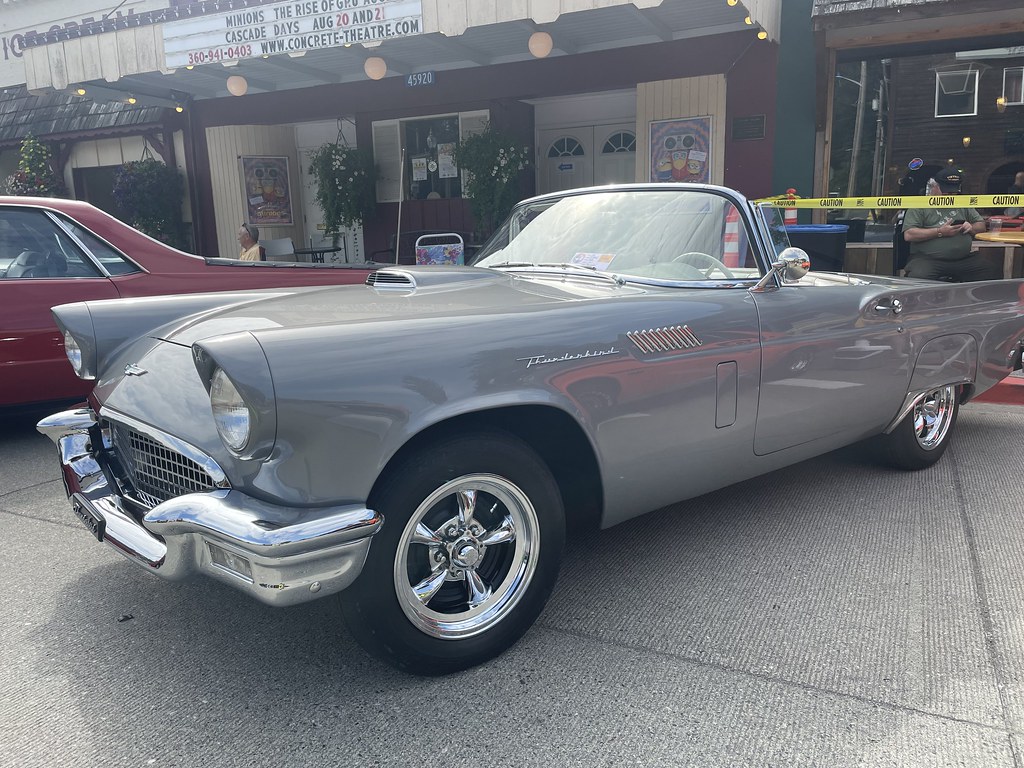
7. **1957 Ford Thunderbird**The 1957 Ford Thunderbird, often affectionately known as the “Baby Bird,” truly epitomized the concept of a personal luxury car, a niche Ford pioneered when it first introduced the four-seater Thunderbird in 1955. This first generation, spanning from 1955 to 1957, became the benchmark for other American automakers looking to enter the two-seat luxury market. Its styling was distinctively of its time, with the 1957 model year introducing subtle yet impactful changes like small tail fins, a larger grille, and a consolidated single instrument pod in the dashboard, enhancing its sleek appeal.
Powering this iconic convertible was a standard 312-cid V8 engine, smoothly paired with a Ford-O-Matic three-speed transmission, providing a comfortable and confident ride. While later models would feature electric soft top operation, the 1957 version typically required manual operation, a charming but less convenient aspect for daily use. This car, in its essence, was designed not just for transport, but for making a statement, for cruising in style, and for enjoying the open road with a sense of refined sportiness that resonated deeply with the American public.
For today’s commuter or a younger driver, the 1957 Ford Thunderbird, despite its undeniable allure, poses several practical considerations. Its two-seater configuration, while perfect for a weekend escape, is inherently impractical for daily family duties or carpooling. The manual operation of the soft top, while manageable, lacks the effortless convenience that modern drivers expect, especially in unexpected weather.
Moreover, the “Baby Bird” predates many crucial modern safety innovations, meaning it lacks features like advanced braking systems, airbags, or crumple zones, which are standard in contemporary vehicles and essential for daily commuting safety. While its price point of around $50,000 might seem accessible for a classic, this doesn’t account for the ongoing costs of specialized maintenance, the hunt for period-correct parts, and its relatively lower fuel efficiency compared to today’s cars. It’s a gorgeous piece of automotive history, certainly, but its design and capabilities are tailored for leisure and admiration rather than the rigors of a daily commute, making it a dream car that many might pass on for practicality’s sake.
As we journey into the late 1950s and beyond, the automotive world evolved, introducing a fresh breed of convertibles. These machines were about performance, distinctive styling, and cultural impact, rather than just opulent grandeur. Yet, even these celebrated icons, with their thrilling engines and head-turning looks, often prove unsuitable as daily drivers for a younger, practicality-focused generation. Let’s explore some of these legendary drop-tops.
Car Model Information: 1956 Ford Thunderbird Base
Name: Ford Thunderbird
Caption: 1957 Thunderbird
Manufacturer: Ford Motor Company
Production: unbulleted list
ModelYears: unbulleted list
Class: unbulleted list
Layout: Front-engine, rear-wheel drive layout
Categories: 1960s cars, 1970s cars, 1980s cars, 1990s cars, 2000s cars
Summary: The Ford Thunderbird is a personal luxury car manufactured and marketed by Ford Motor Company for model years 1955 to 2005, with a hiatus from 1998 to 2001.
Ultimately gaining a broadly used colloquial nickname, the T-Bird, the model was introduced as a two-seat convertible, subsequently offered variously in a host of body styles including as a four-seat hardtop coupe, four-seat convertible, five-seat convertible and hardtop, four-door pillared hardtop sedan, six-passenger hardtop coupe, and five-passenger pillared coupe, before returning in its final generation, again as a two-seat convertible.
At its inception, Ford targeted the two-seat Thunderbird as an upscale model. The 1958 model year design introduced a rear seat and arguably marked the expansion of a market segment that came to be known as personal luxury cars, positioned to emphasize comfort and convenience over handling and high-speed performance.
Get more information about: Ford Thunderbird
Buying a high-performing used car >>>
Brand: Ford Model: Thunderbird
Price: $34,999 Mileage: 87,117 mi.
Read more about: Dream Drives: 15 Classic Cars That Should Absolutely Be Revived for Today’s Roads
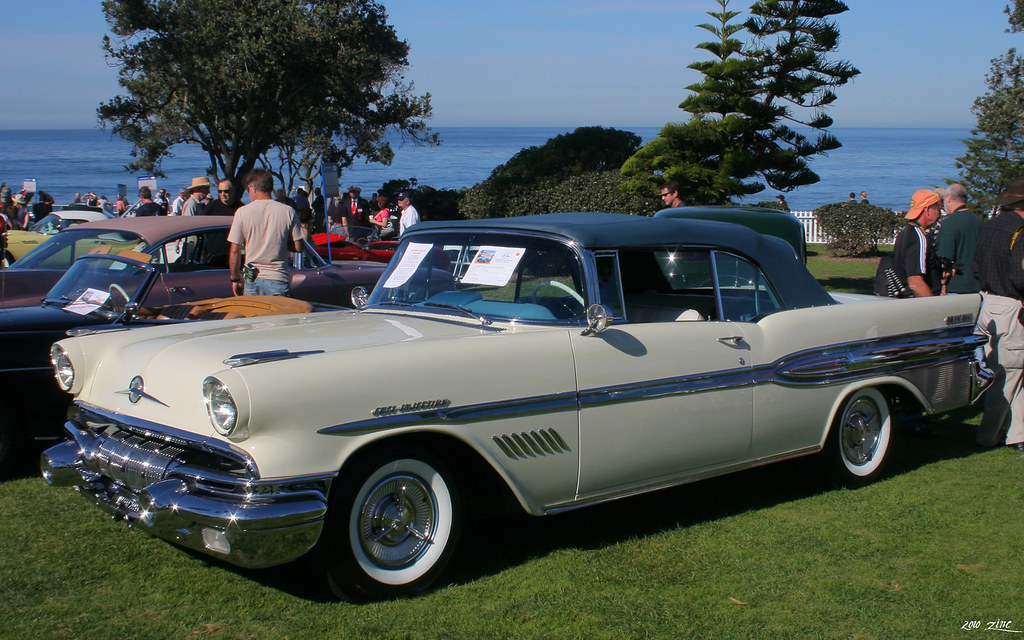
8. **1957 Pontiac Bonneville**Pontiac made a grand entrance in 1957 with the Bonneville, a luxurious and high-performance convertible derived from the Star Chief. It was fully loaded, featuring leather seating and power everything—windows, steering, brakes, seats, and a power top. This showcased a level of convenience and sophistication top-tier for its era, setting new benchmarks for automotive luxury.
Visually, the Bonneville was striking, featuring a chromed bullet bumper, distinctive headlights, sweeping side strips, and gorgeous tail fins. A proud ‘Fuel Injection’ badge adorned the trunk lid, signifying its pioneering technology. These elements collectively ensured the Bonneville stood out, exuding an air of potent performance and refined design, making it an instant classic.
Despite its luxurious appointments and groundbreaking fuel injection, the Bonneville’s driving dynamics differ greatly from modern expectations. While powerful for its time, it lacks the precise handling, advanced braking, and acceleration modern drivers take for granted. Its size, though not extreme, makes it less nimble for today’s urban environments and tight parking spaces.
The Bonneville’s extreme rarity is a major drawback; only 630 were produced in 1957. This exclusivity means a prohibitively high acquisition cost today, often exceeding $100,000. Such a valuable vehicle demands specialized maintenance and rare parts, making it impractical for daily use, better suited for collectors and occasional show appearances.
Car Model Information: 1964 Pontiac Bonneville
Name: Pontiac Bonneville
Caption: 2000–2005 Pontiac Bonneville
Manufacturer: Pontiac (automobile)
Production: 1958–2005,1983–2005 (Canada)
Assembly: Pontiac Assembly,Pontiac, Michigan
Class: Full-size car
Layout: FR layout
Predecessor: Pontiac Star Chief,Pontiac Executive
Successor: Pontiac G8
Categories: 1950s cars, 1960s cars, 1970s cars, 1980s cars, 1990s cars
Summary: The Pontiac Bonneville is a model line of full-size or mid-size rear-wheel drive (until 1987) or front-wheel drive cars manufactured and marketed by Pontiac from 1957 until 2005.
The Bonneville (marketed as the Parisienne in Canada until 1981), and its platform partner, the Grand Ville, are some of the largest Pontiacs ever built; in station wagon body styles they reached just over 230 inches (5.8 m) long. They were also some of the heaviest cars produced at the time at 5,000 pounds (2,300 kg) or more.
The Bonneville nameplate was introduced as a limited production performance convertible during the 1957 model year, its name taken from the Bonneville Salt Flats in Utah, an early site of U.S. automobile racing and numerous world land speed records.
Get more information about: Pontiac Bonneville
Buying a high-performing used car >>>
Brand: Pontiac Model: Bonneville
Price: $79,999 Mileage: 1,376 mi.
Read more about: Dream Drives: 15 Classic Cars That Should Absolutely Be Revived for Today’s Roads
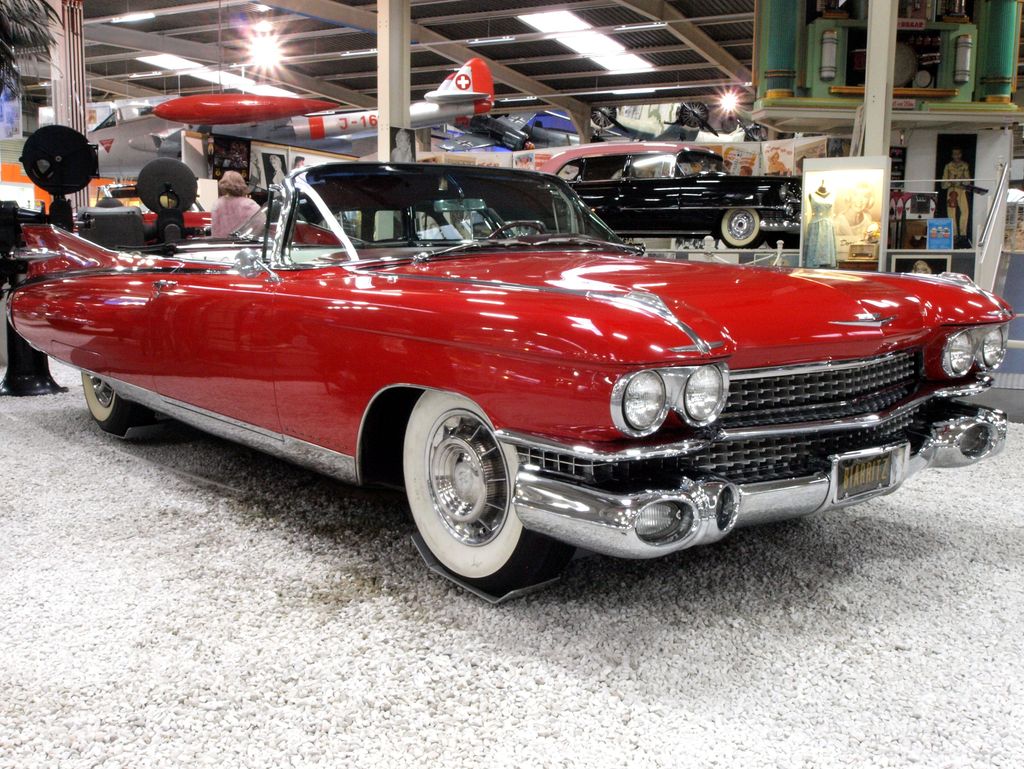
9. **1959 Cadillac Eldorado Biarritz**No list of iconic convertibles embodying 1950s American excess is complete without the 1959 Cadillac Eldorado Biarritz. Nearly 19 feet long and weighing a colossal two and a half tons, this automotive titan was powered by a 390-cubic-inch V8 engine producing 345 horsepower. Chrome was everywhere, and plush seats defined unparalleled luxury, embodying the era’s automotive dreams.
What truly defined the ’59 Caddies, especially the Eldorado Biarritz, were its enormous, sweeping, chrome-trimmed tail fins. Crowned with dual bullet-shaped taillights, these were the absolute pinnacle of the tail fin craze. This audacious design statement made the car instantly recognizable and incredibly bold, signaling a unique era of automotive styling.
The opulence extended to its fully powered convertible top, though its retraction cycle was notably long. For an already lavish car, only four options were offered: Air Conditioning, cruise control, the Autronic-Eye automatic headlight dimmer, and E-Z Eye tinted glass. This underscored its comprehensive standard equipment and design for ultimate indulgence.
For a modern commuter, the 1959 Eldorado Biarritz is impractical. Its sheer size makes it unwieldy in traffic and parking nearly impossible. The gargantuan V8 is incredibly thirsty. Prices soaring to $200,000-$400,000+ make it an investment, not a daily driver. Lack of modern safety and costly maintenance solidify its role as a revered museum piece.
Car Model Information: 2023 INFINITI QX60 Luxe
Caption: 1963 Cadillac Eldorado Convertible
Name: Cadillac Eldorado
Manufacturer: Cadillac
Production: 1952–2002
Layout: Front-engine, rear-wheel-drive layout
Aka: Cadillac Fleetwood Eldorado
Class: Personal luxury car
Successor: Cadillac CTS
Categories: 1960s cars, 1970s cars, 1980s cars, 1990s cars, 2000s cars
Summary: The Cadillac Eldorado is a luxury car manufactured and marketed by the Cadillac Motor Car Division of General Motors from 1952 until 2002, over twelve generations.
The Eldorado was at or near the top of the Cadillac product line. The original 1953 Eldorado convertible and the Eldorado Brougham models of 1957–1960 had distinct bodyshells and were the most expensive models offered by Cadillac during those years. The Eldorado was never less than second in price after the Cadillac Series 75 limousine until 1966. Beginning in 1967, the Eldorado retained its premium position in the Cadillac price structure, but was manufactured in high volumes on a unique, two-door personal luxury car platform.
The Eldorado carried the Fleetwood designation from 1965 through 1972, and was seen as a modern revival of the pre-war Cadillac V-12 and Cadillac V-16 roadsters and convertibles.
Get more information about: Cadillac Eldorado
Buying a high-performing used car >>>
Brand: Cadillac Model: Eldorado Biarritz
Price: $33,990 Mileage: 23,460 mi.
Read more about: Everyone Wants These 14 Classic Cars In Their Garage: A Deep Dive for Enthusiasts
10. **1959 Austin-Healy Bugeye Sprite Mark I**Shifting dramatically, the 1959 Austin-Healy Bugeye Sprite Mark I offers a different classic convertible experience. Made in the UK from 1958, this sports car was touted as an affordable option, famously fitting in a “bike shed.” It featured a low stance and a tiny 0.9-liter four-cylinder engine generating a modest 43 horsepower.
Its endearing “Bugeye” or “Frogeye” moniker came from the unusual placement of its headlights. Originally designed to retract, they were left permanently “exposed” due to cost-cutting. This distinctive, charming look instantly made it a beloved classic and an attention-grabber, showing how accidental design choices can become iconic features.
While undeniably fun and charming, the Bugeye Sprite’s performance pales compared to modern expectations. Its 43 horsepower means leisurely acceleration, struggling to keep pace with contemporary traffic, especially on highways. The manual convertible top, though part of its appeal, is an inconvenience for quick weather changes during a daily commute.
Despite being relatively affordable for a classic (under $30,000), the Bugeye Sprite is impractical for daily commuting. Its limited power and lack of modern safety features like airbags make it a dedicated enthusiast’s car for weekend joyrides. It simply doesn’t meet the reliability, power, or modern amenities a younger generation expects from a daily driver.
Car Model Information: 2023 INFINITI QX60 Luxe
Categories: 1952 establishments in England, 1960s cars, 1972 disestablishments in England, All Wikipedia articles written in British English, Articles with short description
Summary: Austin-Healey was a British sports car maker established in 1952 through a joint venture between the Austin division of the British Motor Corporation (BMC) and the Donald Healey Motor Company (Healey), a renowned automotive engineering and design firm. Leonard Lord represented BMC and Donald Healey his firm.
BMC merged with Jaguar Cars in 1966 to form British Motor Holdings (BMH). Donald Healey left BMH in 1968 when it merged into British Leyland. Healey then joined Jensen Motors, which had been making bodies for the “big Healeys” since their inception in 1952, and became their chairman in 1972. Austin-Healey cars were produced until 1972 when the 20-year agreement between Healey and Austin came to an end.
Get more information about: Austin-Healey
Buying a high-performing used car >>>
Brand: Austin-Healy Model: Bugeye Sprite
Price: $33,990 Mileage: 23,460 mi.

11. **1960 MG MGA Roadster**The 1960 MG MGA Roadster perfectly embodies the quintessential British sports car, produced from 1955 to 1962. It showcased a classic design with a long hood and a short rear deck, capturing the sporty and fun essence of British roadsters. Engine options included 1.4-liter and 1.6-liter inline-fours; a Twin Cam variant was known for reliability issues.
The interior was compact, featuring dual bucket seats and a distinctive “banjo” steering wheel. The tachometer and speedometer were optimally placed directly in front of the driver. Retrieving the manual convertible top involved unsnapping grommets before it could be stowed behind the seats, a process requiring time and effort.
The MGA offered a pure, unadulterated driving experience, prioritizing engagement over modern convenience. Its light weight and nimble handling made it a joy on winding roads. However, its modest power output, coupled with potential reliability concerns, means it struggles to deliver the effortless performance expected by today’s drivers on busy roads.
For daily commuting, the MGA has significant drawbacks. Its two-seater configuration limits practicality. The manual soft top is a nuisance in sudden downpours. Crucially, absence of contemporary safety features and amenities, coupled with a $25,000 to $55,000 price, makes it a dedicated recreational vehicle, not a sensible daily driver for a younger generation.
Read more about: 15 Iconic Nameplates: Classic Car Brands Fueling the Electric Revolution
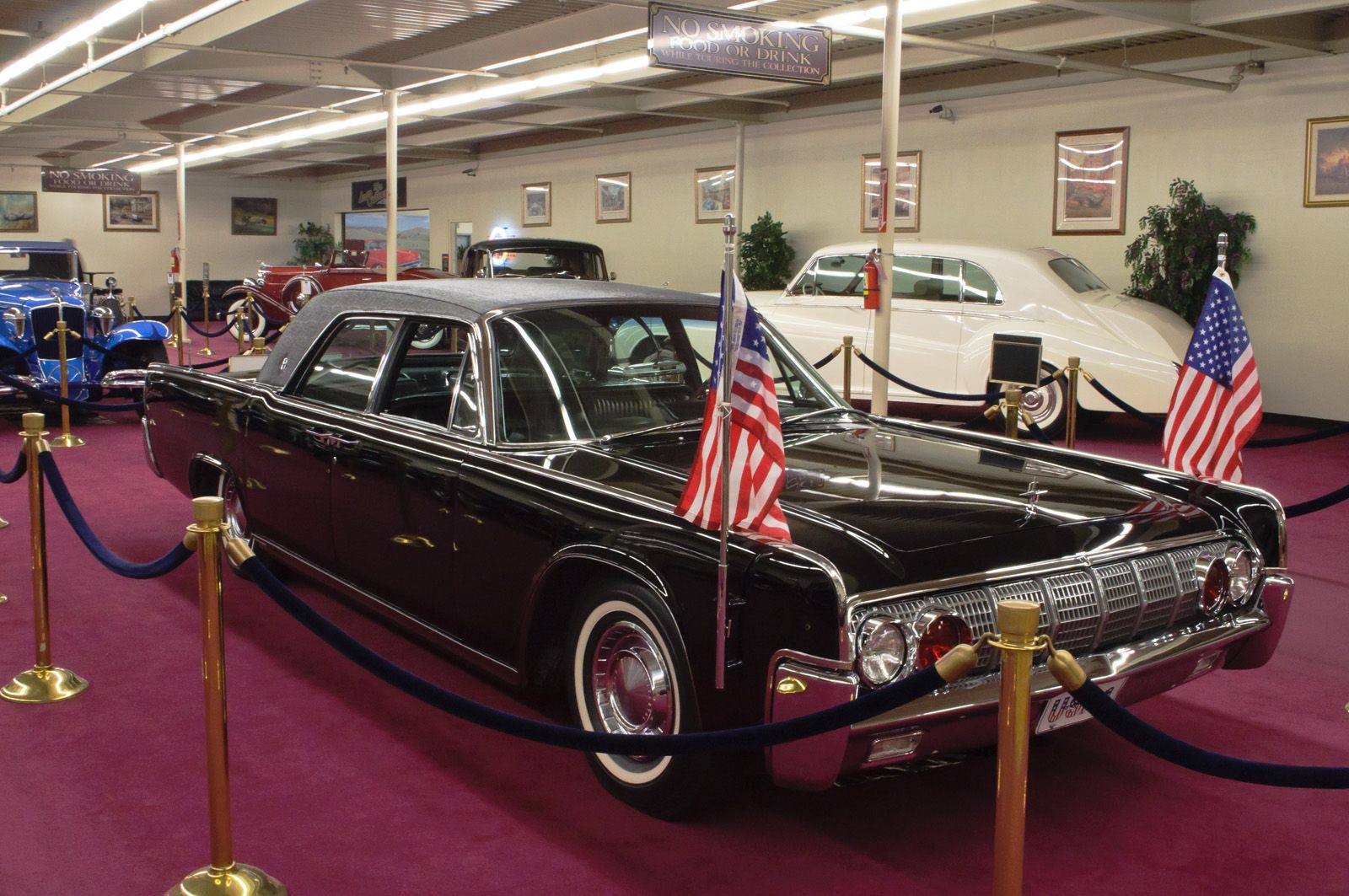
12. **1962 Lincoln Continental**The 1962 Lincoln Continental, representing its fourth styling generation, became synonymous with sophisticated American luxury. It introduced a rounded profile, clean straight sides, distinctive quad headlights, and iconic suicide doors, adding unique elegance. This substantial 5,000-pound car was powered by a robust 430 cubic-inch V8, delivering 325-340 horsepower through a three-speed automatic transmission.
The interior was meticulously designed for comfort and prestige, featuring a deep cockpit, chrome-trimmed instruments, and faux wood-grain inserts. Air conditioning vents, if equipped, took center stage below the radio, highlighting its commitment to comfort. A fully powered convertible top retracted seamlessly into the trunk, showcasing advanced engineering for its time.
Despite its impressive features and powerful engine, the ’62 Continental surprisingly handled well for its considerable size, presenting an incredible sight on the road. Its status as a truly classic American luxury car endures, turning heads with its timeless design and commanding presence. It was, and remains, a statement of success and exquisite taste.
For a modern commuter, the 1962 Lincoln Continental poses challenges. Its immense dimensions hinder navigation in city traffic and parking. The powerful V8, while smooth, is less fuel-efficient, leading to high running costs. With the powered top down, the trunk becomes unusable. Coupled with a $100,000+ price tag and lack of modern safety, it’s a cherished classic, not a daily driver.
Car Model Information: 2018 Lincoln Continental Reserve
Name: Lincoln Continental
Caption: 2019 Lincoln Continental
Manufacturer: Lincoln Motor Company
Production: 1939–1942,1946–1948,1956–2002,2016–2020
ModelYears: 1940–1942,1946–1948,1958–1980,1982–2002,2017–2020
Class: Full-size car,luxury car
Layout: Longitudinal engine,Front-engine, rear-wheel-drive layout
Categories: 1930s cars, 1940s cars, 1950s cars, 1960s cars, 1970s cars
Summary: The Lincoln Continental is a series of mid-sized and full-sized luxury cars produced between 1939 and 2020 by Lincoln, a division of the American automaker Ford. The model line was introduced following the construction of a personal vehicle for Edsel Ford, who commissioned a coachbuilt 1939 Lincoln-Zephyr convertible, developed as a vacation vehicle to attract potential Lincoln buyers. In what would give the model line its name, the exterior was designed with European “continental” styling elements, including a rear-mounted spare tire.
In production for over 55 years across nine different decades, Lincoln has produced ten generations of the Continental. Within the Lincoln model line, the Continental has served several roles ranging from its flagship to its base-trim sedan. From 1961 to 1976, Lincoln sold the Continental as its exclusive model line. The model line has also gone on hiatus three times. From 1949 to 1955, the nameplate was briefly retired. In 1981, the Continental was renamed the Lincoln Town Car to accommodate the 1982 seventh-generation Continental. After 2002, the Continental was retired, largely replaced by the Lincoln MKS in 2009; in 2017, the tenth-generation Continental replaced the MKS.
As part of its entry into full-scale production, the first-generation Continental was the progenitor of an entirely new automotive segment, the personal luxury car. Following World War II, the segment evolved into coupes and convertibles larger than sports cars and grand touring cars with an emphasis on features, styling, and comfort over performance and handling. From 1956 to 1957, the Continental nameplate was the namesake of the short-lived Continental Division, marketing the 1956–1957 Continental Mark II as the worldwide flagship of Ford Motor Company; as a second successor, Ford introduced the Continental Mark series in 1969, produced over six generations to 1998.
Along with the creation of the personal luxury car segment, the Lincoln Continental marked the zenith of several designs in American automotive history. The Continental is the final American vehicle line with a factory-produced V12 engine (1948), the final four-door convertible (1967), and the final model line to undergo downsizing (for the 1980 model year).
American production of the Continental and MKZ, its only two sedans, ended in 2020 thereby making Lincoln a crossover/SUV-only brand in the US.
Get more information about: Lincoln Continental
Buying a high-performing used car >>>
Brand: Lincoln Model: Continental
Price: $25,000 Mileage: 66,241 mi.
Read more about: Revving Up Controversy: The 6 Car Marketing Campaigns That Shocked the Automotive Industry
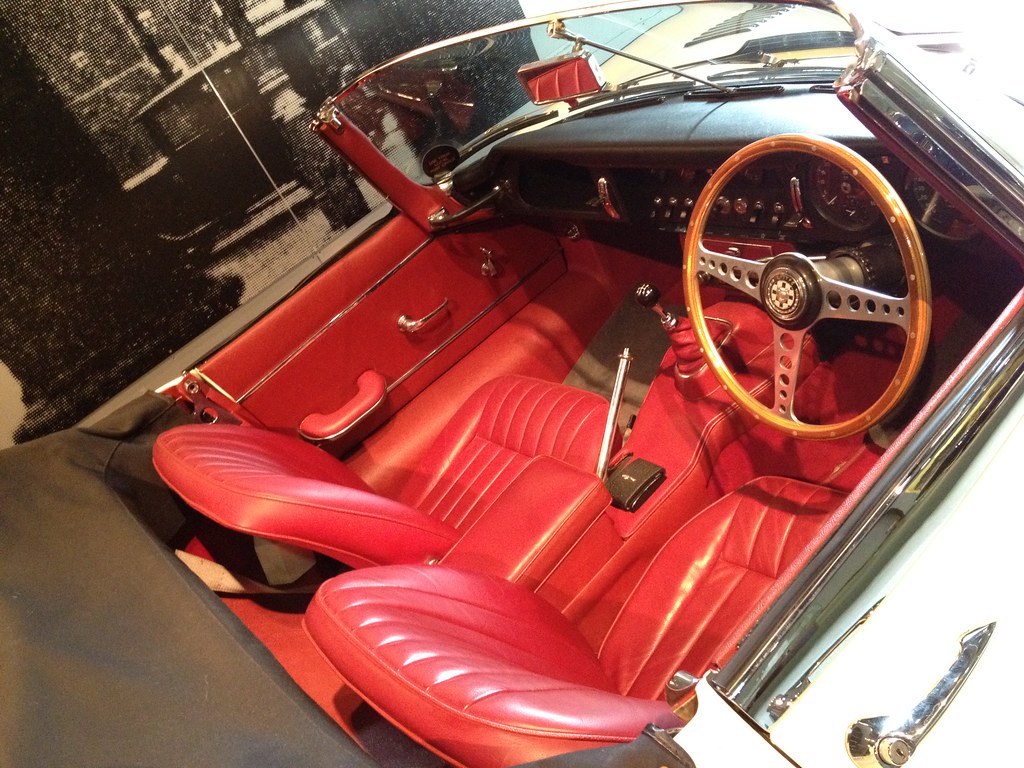
13. **1965 Jaguar E-Type**The 1965 Jaguar E-Type, known as XK-E in North America, is an indisputable icon of automotive design. Enzo Ferrari himself famously called it “the most beautiful car ever made.” Its breathtaking aesthetics are defined by an extremely long hood and a gracefully short rear deck, proportions creating dynamic elegance and raw power.
The E-Type’s interior was equally spectacular, focusing on the driving experience. Instruments and controls were expertly laid out in a clear, functional cockpit. Comfortable leather seats held the driver securely. Early models used a Moss 4-speed manual gearbox, notable for lacking synchromesh in first gear, producing an iconic whine from its straight-cut gears.
Beyond stunning looks, the E-Type was a genuine high-performance sports car, offering exhilarating speeds and an engaging drive. Its combination of incredible appearance and potent capabilities meant it would literally stop traffic. It epitomized sophisticated sportiness, blending British elegance with a thrilling driving experience few cars could match.
Yet, for the modern commuter, the 1965 Jaguar E-Type is impractical. The Moss 4-speed gearbox demands more effort, unsuited for stop-and-go traffic. Its immense value, with some examples approaching $200,000, makes it a delicate investment. As a two-seater lacking modern safety features, it fails to meet demands for versatility, low running costs, and contemporary safety standards.
Car Model Information: 1971 Jaguar E-Type Restomod
Sp: uk
Name: Jaguar E-Type
Caption: 1961 E-Type Series 1 3.8-Litre, the first production model of this open two-seater
Aka: Jaguar XK-E (North America),Jaguar V-12
Manufacturer: Jaguar Cars
Production: 1961–1974
Class: Sports car
Predecessor: Jaguar XK150
Related: Jaguar D-Type,Jaguar XJ13
Successor: Jaguar XJS
Layout: FMR layout
Assembly: Coventry,England
Designer: Malcolm Sayer
Categories: 1970s cars, 2+2 coupés, All Wikipedia articles written in British English, All articles with dead external links, All articles with specifically marked weasel-worded phrases
Summary: The Jaguar E-Type, or the Jaguar XK-E for the North American market, is a British front mid-engined sports car that was manufactured by Jaguar Cars Ltd from 1961 to 1974. Its sleek appearance, advanced technologies, high performance, and competitive pricing established it as an icon. The E-Type’s claimed 150 miles per hour (240 km/h) top speed, sub-7-second 0 to 60 mph (97 km/h) acceleration, largely unitary body construction, front and rear independent suspension with disc brakes, mounted inboard at the rear, and rack-and-pinion steering spurred industry-wide changes.
The E-Type was based on Jaguar’s D-Type racing car, which had won the 24 Hours of Le Mans for three consecutive years beginning in 1955.
The E-Type employed what was, for the early 1960s, a novel design principle, with a front subframe carrying the engine, front suspension and front bodywork bolted directly to the body tub. No ladder frame chassis, as was common at the time, was needed and as such the first cars weighed only 1,315 kg (2,899 lb).
It is rumored that, on its debut on 15 March 1961, Enzo Ferrari called it “the most beautiful car ever made”, but this statement is not fully confirmed. In 2004, Sports Car International magazine placed the E-Type at number one on their list of Top Sports Cars of the 1960s. In March 2008, the Jaguar E-Type ranked first in The Daily Telegraph’s online list of the world’s “100 most beautiful cars” of all time.
Get more information about: Jaguar E-Type
Buying a high-performing used car >>>
Brand: Jaguar Model: E-Type
Price: $64,900 Mileage: 2,455 mi.
Read more about: Dream Drives: 15 Classic Cars That Should Absolutely Be Revived for Today’s Roads

14. **1966 Chevrolet Corvette**The name Corvette alone turns heads, and the 1966 Chevrolet Corvette stands as a quintessential American sports car. Part of a lineage in continuous production since 1963, the ’66 model is celebrated for its styling: distinctive wheel bulges, iconic hidden headlights, and a pronounced centerline hood bulge.
Under the hood, buyers chose from a potent 327 V8 (300 hp) up to a monstrous 427 V8 (425 hp), pumping out pavement-burning power. The interior emphasized a true driver’s car, with distinct “cockpit” style spaces. The driver had a full array of gauges, and the center console housed the 4-speed shifter.
This generation of Corvette offered raw, exhilarating performance that captivated America, solidifying its place as a muscle car legend. With powerful engine options and dynamic styling, the 1966 Corvette provided unmatched driving thrills. Its aggressive stance and powerful engines ensured it was, and remains, a car that commands attention.
Despite its appeal, the 1966 Chevrolet Corvette presents significant challenges for a modern commuter. Its two-seater configuration limits utility. Manual soft top operation, though easy, lacks modern convenience. High-performance engines mean lower fuel efficiency and higher maintenance costs. With prices often exceeding $80,000 and lacking contemporary safety, it’s a revered collector’s item, not a daily commuter.
Car Model Information: 2019 Chevrolet Corvette Stingray
Name: Chevrolet Corvette
Caption: 2021 Chevrolet Corvette C8
Manufacturer: Chevrolet
Production: 1953–present
ModelYears: bulleted list
Assembly: bulleted list
Class: Sports car
BodyStyle: coupé
Layout: Front-engine, rear-wheel-drive layout,Rear mid-engine, rear-wheel-drive layout
Categories: 1950s cars, 1960s cars, 1970s cars, 1980s cars, 1990s cars
Summary: The Chevrolet Corvette is a line of American two-door, two-seater sports cars manufactured and marketed by General Motors under the Chevrolet marque since 1953. Throughout eight generations, indicated sequentially as C1 to C8, the Corvette is noted for its performance, distinctive styling, lightweight fiberglass or composite bodywork, and competitive pricing. The Corvette has had domestic mass-produced two-seater competitors fielded by American Motors, Ford, and Chrysler; it is the only one continuously produced by a United States auto manufacturer. It serves as Chevrolet’s halo car.
In 1953, GM executives accepted a suggestion by Myron Scott, then the assistant director of the Public Relations department, to name the company’s new sports car after the corvette, a small, maneuverable warship. Initially, a relatively modest, lightweight 6‑cylinder convertible, subsequent introductions of V8 engines, competitive chassis innovations, and rear mid-engined layout have gradually moved the Corvette upmarket into the supercar class. In 1963, the second generation was introduced in coupe and convertible styles. The first three Corvette generations (1953–1982) employed body-on-frame construction, and since the C4 generation, introduced in 1983 as an early 1984 model, Corvettes have used GM’s unibody Y‑body platform. All Corvettes used front mid-engine configuration for seven generations, through 2019, and transitioned to a rear mid-engined layout with the C8 generation.
Initially manufactured in Flint, Michigan, and St. Louis, Missouri, the Corvette has been produced in Bowling Green, Kentucky, since 1981, which is also the location of the National Corvette Museum. The Corvette has become widely known as “America’s Sports Car.” Automotive News wrote that after being featured in the early 1960s television show Route 66, “the Corvette became synonymous with freedom and adventure,” ultimately becoming both “the most successful concept car in history and the most popular sports car in history.”
Get more information about: Chevrolet Corvette
Buying a high-performing used car >>>
Brand: Chevrolet Model: Corvette
Price: $47,990 Mileage: 20,872 mi.
Read more about: Dream Drives: 15 Classic Cars That Should Absolutely Be Revived for Today’s Roads
These classic convertibles, from spirited British roadsters to mighty American muscle cars, represent a golden era of automotive design. They embody freedom, style, and a visceral driving experience that captivates enthusiasts. However, their enduring appeal often exists separately from their suitability as practical, everyday transportation today. The charm of a manual top, the roar of a carbureted V8, and the absence of modern tech make them special, but also impractical for the daily grind. For the modern commuter, especially the younger crowd, efficiency, safety, reliability, and integrated technology often outweigh the romantic pull of these magnificent dreams on wheels. They remain cherished works of art, best enjoyed on sun-drenched weekends or at prestigious car shows, preserving their legacy for admiration rather than daily duty.

